What will offshore wind mean for SLO County? 750 turn out to learn about plans
Politicians, government officials and industry leaders gathered Wednesday in San Luis Obispo for a panel event on offshore wind, sharing their enthusiasm, optimism and concerns about the plan to bring hundreds of floating wind turbines to waters off California’s Central Coast.
The four-hour event, held at the Katcho Achadjian Government Center, was well attended both in person and online via Zoom, with an estimated 750 people participating.
Three separate panels were hosted by Sen. John Laird, Assemblymember Dawn Addis and SLO County Supervisor Bruce Gibson. The panels were followed by an hour of public comment.
Two overwhelming themes emerged from the discussion: a general enthusiasm and excitement for the incoming industry, along with a clear concern about how it could impact the Central Coast.
Leases were granted in June to Invenergy, Equinor and Golden State Wind to develop a 376-square-mile area of the Pacific Ocean known as the Morro Bay Wind Energy Area. The area sits about 20 miles off the coast of Cambria and San Simeon.
Offshore wind developments will have to get about ‘30 permits,’ state official said
David Hochschild, chair of the California Energy Commission, spoke during the first panel about the state’s desire for electricity generated from floating offshore wind to help the state meet its clean energy goals.
He noted that the state has set the goal of procuring 5 gigawatts of offshore wind by 2030 and 25 gigawatts by 2045.
“We want to do this the right way, with a real sensibility and sensitivity toward environmental protection,” Hochschild said.
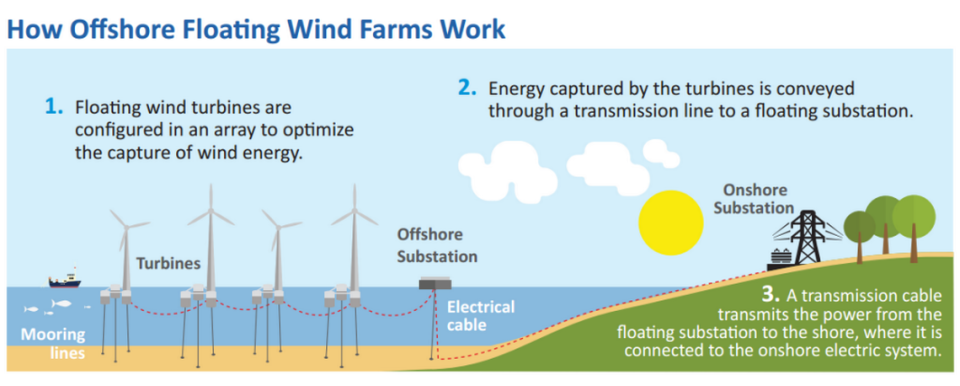
The offshore wind energy developments will have to get “something like 30 permits” to become a reality, Hochschild said.
Those permits will be issued through various state and federal agencies and can only be issued after the offshore wind developments have gone through environmental review before the surveying and construction phases.
Key in issuing the leases was the commitment from the offshore wind energy companies to invest in impacted communities, said Doug Boren, Pacific Regional Office director for the U.S. Bureau of Ocean Energy Management.
More than $27 million will be invested on the Central Coast by the three offshore wind energy developers that won leases, according to BOEM. Those funds could be used to alleviate the development’s impact on the fishing community, and cities and towns.
Another $66 million is earmarked for workforce training and supply chain development in the United States, according to the leases issued to the companies.
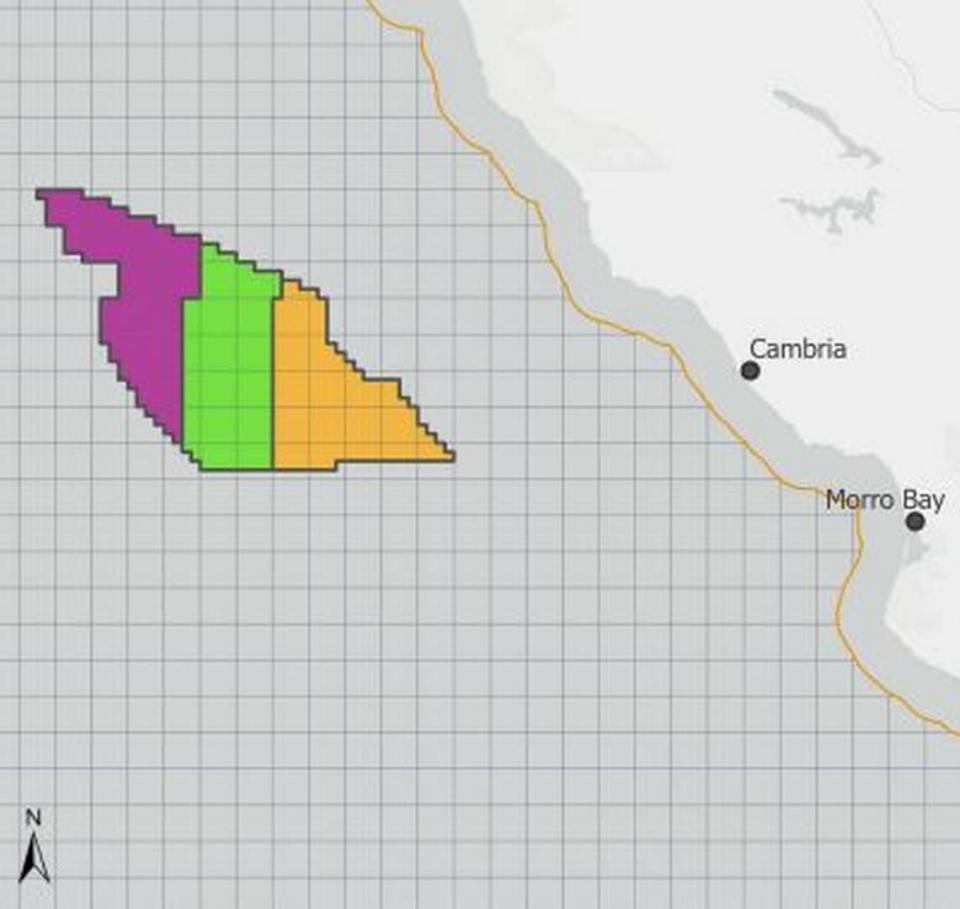
Impacts of offshore wind development largely unknown
Concerns about the potential impacts of offshore wind development were a top topic of discussion throughout the event.
The proposal would bring hundreds of floating turbines to the Pacific Ocean about 20 miles west of San Simeon and Cambria, reaching as tall as 1,100 feet from the water line to the top of the blades.
“There will be trade-offs here,” California Coastal Commission Executive Officer Kate Huckelbridge said. “Our regulatory processes are designed to flush those out.
“We aren’t going to understand all the impacts until they (wind turbines) are in the water,” Huckelbridge added. “It’s a new technology. It’s a new frontier.”
Huckelbridge’s comments reverberated throughout the panel event, and Morro Bay Mayor Carla Wixom shared her deep concerns about the incoming offshore wind industry’s impact on her city.
How big are proposed wind turbines off SLO County coast? Bigger than some California landmarks
“There’s a lot of mixed feelings about offshore wind right now,” Wixom said, “and I’m not sure that we feel we’re ready for what that influx could look like.”
Wixom noted that Morro Bay is a small town of about 10,000 residents with a small city staff and budget that are already burdened. She pleaded during the panel event for more state and federal resources to help the city begin to prepare and respond to the potential development.
The offshore wind industry could create “a situation that is beyond something that I think we’re up to dealing with right now, and I worry about that,” Wixom said. “It challenges our housing market. Will it change our beach town coastal identity? There are so many concerns environmentally — our estuary, our migratory animals — and we just right now unfortunately don’t have enough information.”
Ben Ruttenberg, director of Cal Poly’s Center for Coastal Marine Sciences, said that there are “lots and lots of unanswered questions” about the potential offshore wind energy development.
He said more resources are needed to properly study the various issues around offshore wind and engage impacted communities.
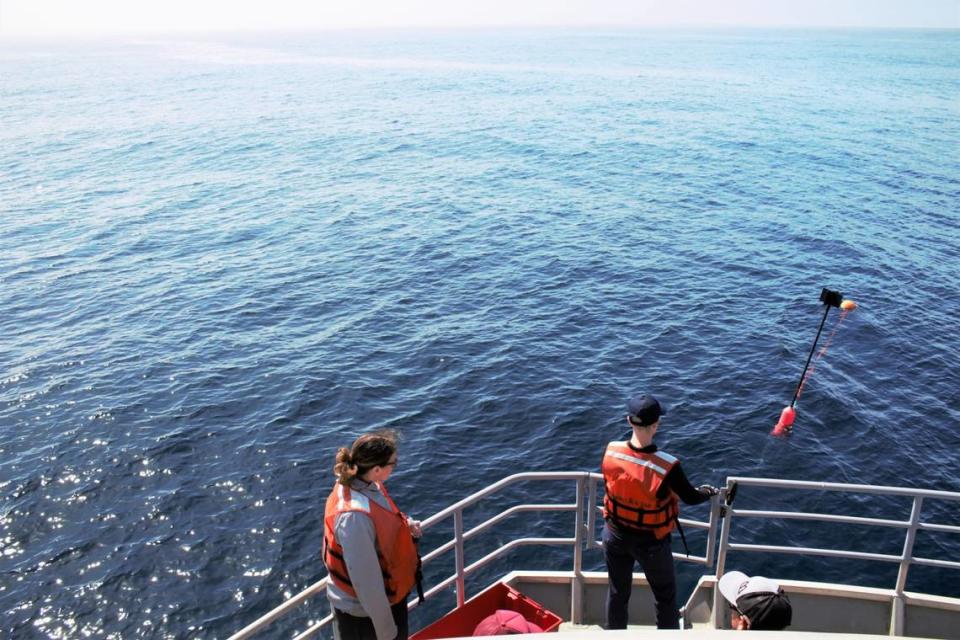
Offshore wind companies commit to careful development of energy resource
Three representatives from the offshore wind companies spoke about their commitment to responsibly developing the Morro Bay Wind Energy Area.
“We know environmental resources and environmental impact are a significant area of concern and uncertainty, said Erin Lieberman, Invenergy’s executive vice president of environmental compliance and strategy. “Invenergy is prioritizing this issue.”
The offshore wind companies are expected to send BOEM their plans to survey the Morro Bay Wind Energy Area within the next year. If approved, the companies will then likely send survey vessels to the area to map the sea floor and deploy buoys to learn more about the surrounding marine environment and weather conditions.
The companies noted that they don’t foresee any industrialization of the Central Coast to fit their port infrastructure needs. Instead, the companies will likely use the ports of Long Beach and Port of Humboldt for those functions.
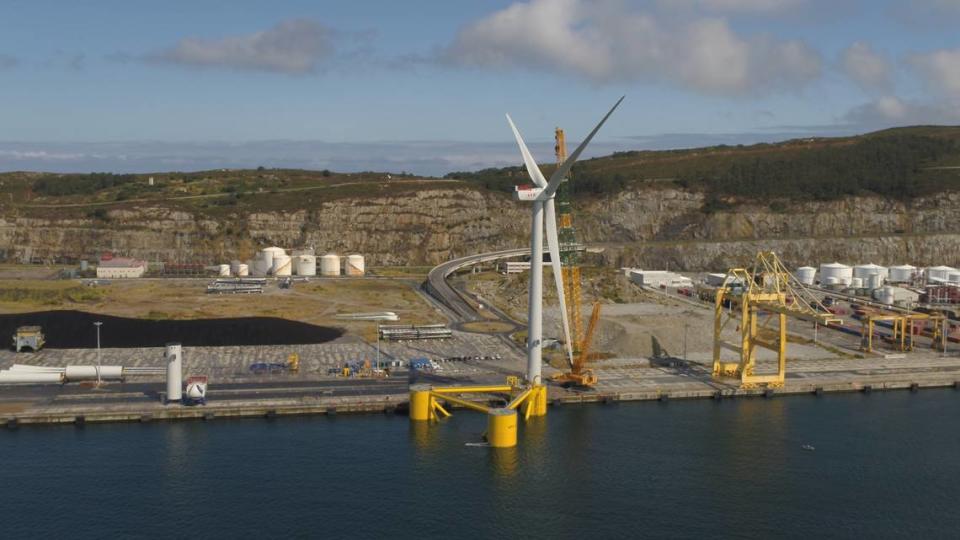
“I do see a role (in San Luis Obispo County) for smaller ports for operations and maintenance bases,” said Martin Goff, Equinor’s director of operations. “But that would be on a much smaller level in keeping with the existing use of those areas.”
Lieberman noted that she expects wind turbines to begin turning in the Pacific Ocean in about 8 to 12 years, but that was dependent on many factors. One major factor she noted was knowing when development permits may be granted, which will be critical for the companies’ success.
“When we don’t have certainty of when that decision will come and that continues to get extended at whatever level — whether it’s the county, the state or the federal permitting — that is a tremendous risk to our projects and our ability to execute,” she said.
Global uncertainty around offshore wind not echoed on West Coast, experts say
Mentioned during the panel event was the recent decision by Ørsted, a Danish wind energy developer, to pull out of a massive New Jersey wind energy project due to high inflation, rising interest rates and supply chain bottlenecks.
Molly Croll, Pacific offshore wind director for trade association American Clean Power, noted that while Ørsted’s move was disappointing, it didn’t spell doom for California’s offshore wind energy future.
“I don’t see a direct relationship between the East Coast industry and here,” she said. “We have a very different development process in California ... and I think California is going through a very deliberate, thoughtful process.”
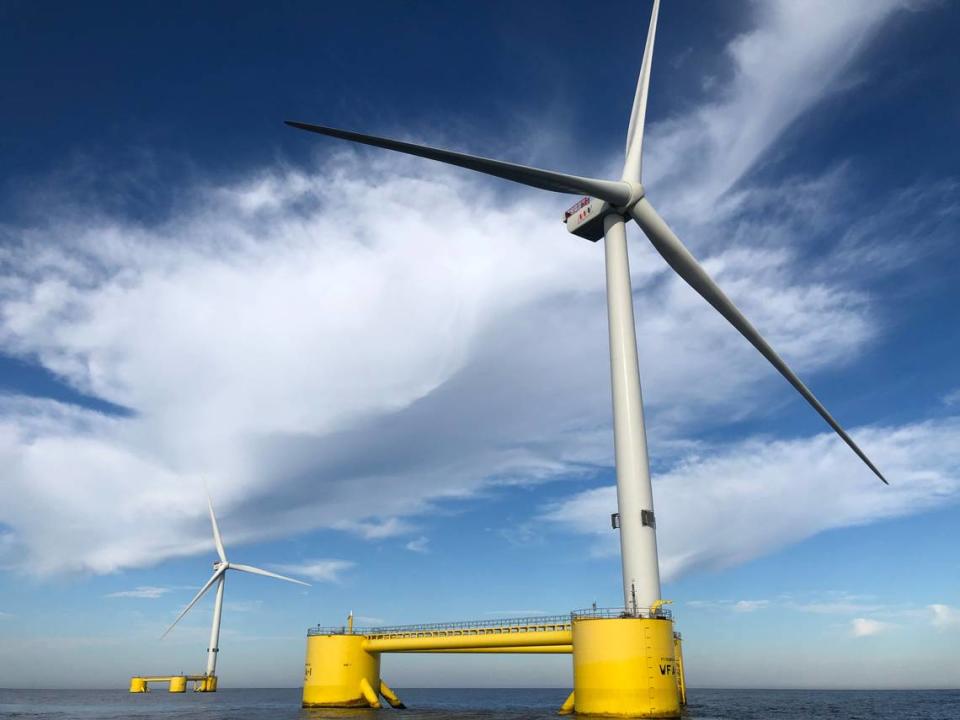
Adam Stern, the director of trade association Offshore Wind California, said California is lucky to be entering the offshore wind energy industry after the East Coast.
“Our state has such a tremendous history of leadership, figuring out how to do things right in a consensus fashion,” he said. “I’m confident we’ll weather these times and we’ll have a thriving industry in the future.”
The offshore wind energy companies echoed Croll’s sentiment that the developments on the Central Coast continue to be viable despite uncertainties in the global industry.
“Our commitment is to see this through and to deliver offshore wind as a local driver of jobs and economic development, community benefits and ultimately fighting climate change,” said Golden State Wind CEO Tyler Studds.
Those who missed the panel event can watch it online at www.slo-span.org/meeting/county-sm_20231101/.


